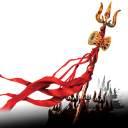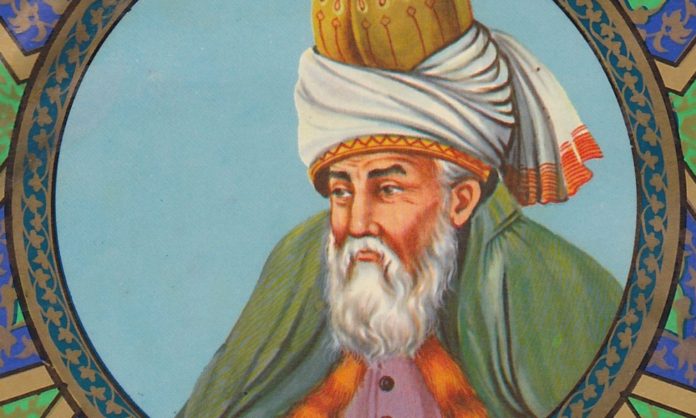“Rumi is from the Multani Marhi of the Mahanirvani Akhada. His Guru Shah Shams i Tabriz or Keshav Puri is also worshiped in the Muslim world as a great Sufi saint. Keshav Puri’s tomb is just outside of the city in Pakistan with which his name is connected, Multan” says Baba Rampuri the author of the book “Autobiography of a Sadhu”. Read the interesting article from the link below
From https://rampuri.com/guru-of-rumi/
Was the guru of Rumi a Sannyasi?
Shah Shams i Tabriz, the guru of Rumi, has a curious background.
During my apprenticeship with my gurus, I learned that my family’s name was Multani marhi, or the Lineage of Multani Baba, also known as Keshav Puri. As Sannyasis are not cremated, but buried, Keshav Puri’s tomb is just outside of the city in Pakistan with which his name is connected, Multan.
It was one of my main gurus, Shri Maharaj Kapil Puri, who first told me in the 70’s that our Lineage Namesake is also worshipped in the Muslim world as a great Sufi saint. He told me that the old fakir/baba tradition knew him as Shamshad Tapa Rez, a descriptive name, prompting several interpretations, that come from his story. “Tapa”, in this case is Sun, heat, and austerities, all connected. In Sanskrit, “tapas.” My gurus interpreted his Muslim name as “One who pulls the Sun.”
But, as they went on, he became known as Shams i Tabriz by the public. “Shams” is also an Arabic word for Sun. Curiously, the word “Keshav” which has several meanings, all of which have something to do with long hair, is also thought of as the rays of the sun, and Keshav is one who is Brahma, Vishnu, and Shiva, like Dattatreya.
As you will read below in a modern song of Multani Baba, still sung in our lineage in Haryana, especially in the sub family of Sheetal Puri Baba, Keshav Puri Ji got into big trouble after he raised the Multan Ruler’s beloved son from the dead. The other shamans, healers, and babas, in fact the Pir of Multan, became very jealous and turned the king against Keshav Puri Ji. And he was indeed imprisoned, but when he tore off his fakir’s gown, and all could see he was UNCIRCUMSIZED, that he was a Naga Baba, they let him go out of fear.
The old story has it that when the king forbade anyone in his kingdom from giving Keshav Puri Ji food or water, it had no effect on the baba, as he was a tapasvi, one used to austerities and could indeed fast indefinitely. What got under his skin, however was the ban on giving him fire, for his dhuni, for his daily practice, and for making Vibhuti, the sacred ashes from the dhuni, which he used to transmit blessings, as we still do today. And, indeed, it was using this Vibhuti, that Keshav Puri brought the Prince back to life.
“No problem,” said Keshav Puri Baba, “the Sky is my dhuni, the Sun my sacrificial fire.” The assembled laughed at the naked man, “and just how will you eat and drink?” The laughing ended when the River Chenab, Herself, came for Keshav Puri’s darshan, sprinkled Her holy water on him, and offered him a fish, which he offered to the Sun. The Sun came down and roasted the fish, which transformed into roasted grains and he distributed this Prasad to the gathering crowds. But the heat was unbearable, and became worse when Keshav Puri Baba sat naked at his dhuni, as the Sun, Himself, was his fire.
Multan started to catch fire from the heat of the Sun. The King finally approached Keshav Puri, begged his forgiveness and mercy, which Baba Ji gave him.
Keshav Puri had both Hindu Sannyasi disciples as well as Muslim disciples. When he left his body, he gave instructions that he be interred in a traditional Sannyasi way, sitting in an underground cave, with mala in hand, but a qabr, a Muslim grave, however empty, would be next to the Samadhi, with a brick wall in between. His final advice was that should ever the Muslim or the Sannyasi tomb be destroyed, or the wall torn down, he would return to Multan and burn it to ashes.












